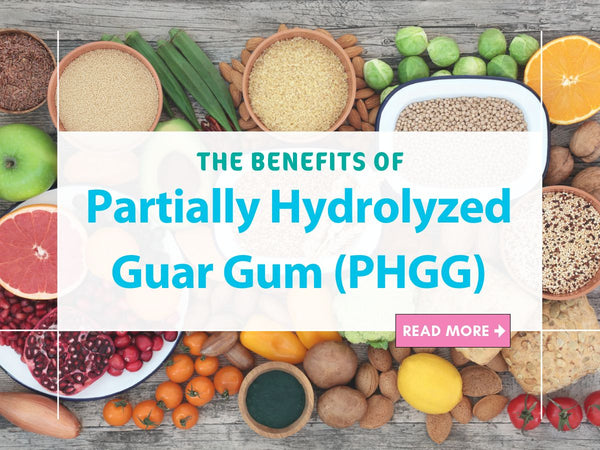- Ph: +61 435 003 412
- operations@fodshopper.com.au
"Organic Orange" has been added to your cart. View cart
"Organic Orange" has been added to your cart. View cart

Gut microbiota populate the intestines in our body and are essential in the aid of metabolism, immunity, and disease prevention. (1)
A healthy gut is one that has a diverse population of good bacteria to promote metabolism. (1) The state of the gut microbiota is influenced by diet, fibre intake, stress, pro-/prebiotic use, and infection. (2)
Irritable bowel syndrome (IBS), is a complicated functional gastrointestinal disorder, with the causes remaining largely unknown. However, a common conclusion is that IBS symptoms are highly affected by the state of the gut microbiota. (2)
Prebiotic fibres are non-digestible ingredients in food that stimulate growth and/or activity of gut bacteria to improve gut health. (2)
Prebiotic fibres are found in many types of soluble fibres, such as galacto-oligosaccharides (GOS), fructo-oligosaccharides (FOS), and resistant starch, which are great for bowel health and frequency, however, not all of these fibres are appropriate for individuals with IBS.
There are a variety of dietary fibre types that can improve or worsen IBS-related symptoms. GOS and FOS, found in foods like onion and garlic, are often the cause of rapid gas production, causing abdominal pain, bloating, and flatulence. (3) On the other hand, soluble dietary fibre, such as resistant starch, guar gums, and pectin, result in lower gas production and minimise IBS symptoms. (3)
Partially Hydrolysed Guar Gum (PHGG) is a soluble prebiotic fibre which, when consumed, increases the abundance of Lactobacilli and Bifidobacterium species of bacteria. (2)
PHGG has been shown in various IBS studies to improve bloating, excessive gas, IBS-related symptoms, and quality of life. (1, 2)
This tasteless and heat stable fibre has also been proven to be effective at softening and improving stool output by bulking stools and improving constipation. (2)
It is recommended that all adults eat a wide variety of foods high in fibre, including fruits, vegetables, and whole grains, for optimal health. The current recommendations for daily dietary fibre intake are 25g/d and 30g/d for women and men, respectively. (4) However, for IBS patients, most of these foods can be high in FODMAPs, causing undesirable symptoms.
An effective way to optimise essential dietary fibre is to start a prebiotic fibre supplement, such as PHGG, which can improve IBS-related symptoms as well as enable improved blood glucose control and body weight management. (2, 3)
Choosing a PHGG supplement like Sunfiber or Regular Girl provides nourishment for the good gut bacteria in the gut, so that they multiply and grow in the large intestine, which is optimal for gut health.
1. Reider SJ et al. (2020). Prebiotic Effects of Partially Hydrolyzed Guar Gum on the Composition and Function of the Human Microbiota-Results from the PAGODA Trial. Nutrients, 12(5), 1257.
2. Niv E et al. (2016). Randomized clinical study: Partially hydrolyzed guar gum (PHGG) versus placebo in the treatment of patients with irritable bowel syndrome. Nutrition & metabolism, 13, 10. https://doi.org/10.1186/s12986-016-0070-5
3. El-Salhy M et al. (2017). Dietary fiber in irritable bowel syndrome (Review). International journal of molecular medicine, 40(3), 607–613. https://doi.org/10.3892/ijmm.2017.3072
4. Australian Dietary Guidelines (2013)

Leave a reply